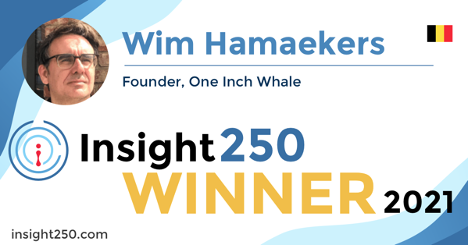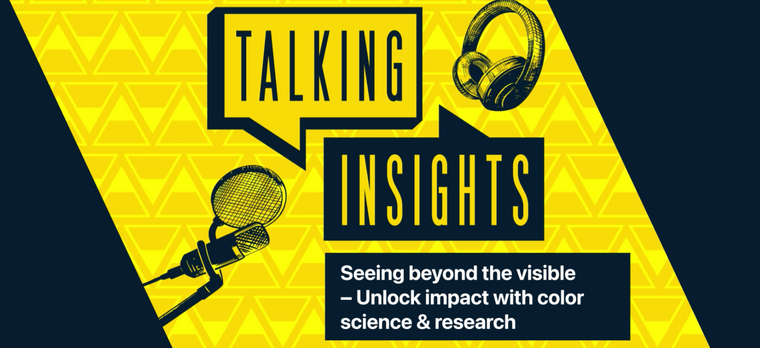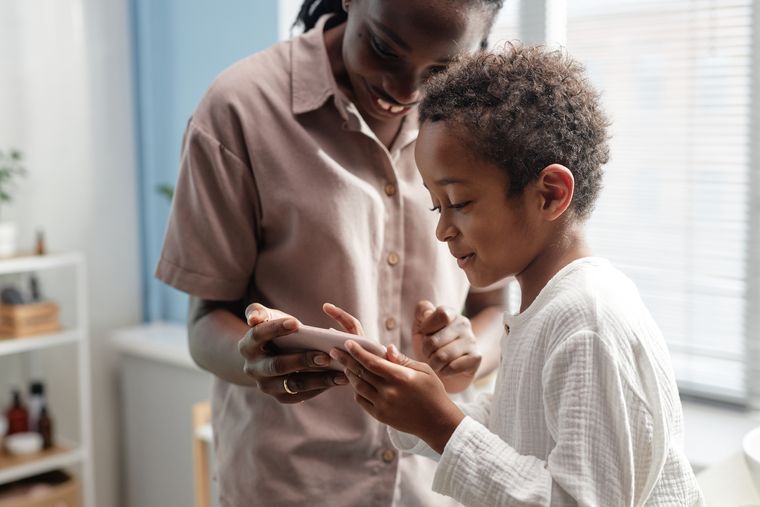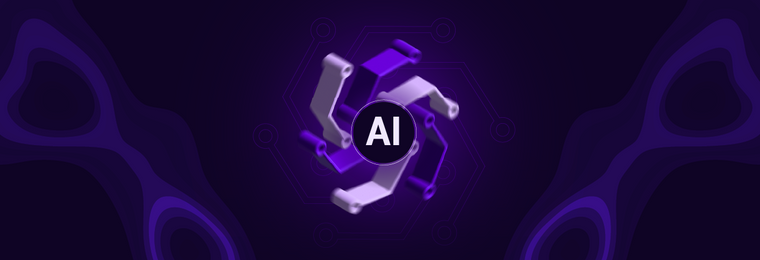The impact of colour
Wim Hamaekers, who is the founder of One Inch Whale, serves as the Managing Director of Thin Slicing and is the Belgium Representative for ESOMAR.

Article series
Insight250
- The importance of business sense in research
- The role of humour in effective leadership
- The importance of ethics
- The importance of disruption in innovation and leadership
- The importance of Disruption in Innovation and Leadership Part 2
- The importance of Diversity & Inclusion
- The impact of colour
- Communicating insight with impact
- Insights on leadership, culture and polling
- The evolution of electric vehicles
- 2022 Top tips (part 1)
- 2022 Top tips (part 2)
- Maximising the potential of data
- The importance of flexible working
- Winners
- The importance of advanced analytics
- Judges for the 2022 Insight250 Awards announced
- The evolution from social listening to digital intelligence
- The Judges' Perspective
- The judge's perspective - part 2
- Insight Climate Collective
- Insights technology
- Understanding employee ownership
- Global insight perspectives
- Top Tips from our Leaders and Innovators
- The Evolution of Insights in the Food & Beverage Market
- The Evolution of Insights in CPG
- Neural Mechanisms Behind Consumer Decision-Making
- Celebrating and Elevating the Insights Industry
- The State of the Insights Industry
- Opportunities, challenges and threats that AI presents
- 2024 Insight250 Winners Announcement
- Connecting Brands and Consumers Through Insights
- The Importance of Human Insight and Attention
- The Elevating Role of Insights with Technology Innovation
- Haleon’s Insight Expert on Consumer Healthcare
- Insight from the Insight250: How AI is Impacting Qualitative Research
- How AI Tech is Doing the ‘Heavy Lifting’ for Insights
- Reviewing the top tips for 2025
- Google's Sarah Ashley on AI and revolutionising insights - Insights from the Insight250
- Beyond BI: The Future of Decision Intelligence for Insight Professionals
- The Advancement & Impact of Insights - An Insight250 Winners Series perspective with David Smith
- International Jury for the 2025 Insight250 Awards Announced
- Newly elected President, Anne-Sophie, on Revolutionizing the Impact of Insights
- Haleon's Litthya Baez on Enhancing Healthcare with Insights - Insight250 Winners Series
- Understanding the Insights of Consumer Decisions
- Moving Beyond Dashboards to Deliver Decisions with AI
- How AI is Transforming Insights
- How AI is Transforming Insights
- Five Years of Insight250: Elevating the Insight Industry
The Insight250 spotlights and celebrates 250 of the world’s premier leaders and innovators in market research, consumer insights and data-driven marketing. The inaugural list was revealed this April and created renewed excitement across the industry whilst strengthening the connectivity of the market research community.
With so many exceptional professionals named to the Insight250 it seems fitting to tap into their expertise and unique perspectives across an array of topics. This weekly series does just that; inquiring about the expert perspectives of many of these individuals in a series of short topical features.
This edition features Wim Hamaekers, who is the founder of One Inch Whale, serves as the Managing Director of Thin Slicing and is the Belgium Representative for ESOMAR. I spoke to Wim to discuss the influence of colours on decisions and how Research & Visual Nudging is impacting brands.
Why is colour so important in people’s life?
We all know Daniel Kahneman’s work, showing that most of the decisions we make on a daily basis are made rather unconsciously. But not a lot of people know that colour is the dominant factor in 85% of the cases! So when consumers judge a brand or product, colour plays a crucial role. In fact, colour is light existing of electromagnetic waves. And the wavelength determines which colour we see, reflecting off an object into our eyes. With this wavelength comes a meaning with a multisensorial aspect; blue colours feel much cooler then red colours for example. It’s a physiological process which is the same for everybody on this planet. Using the right colours can boost your company’s sales because some colour tones activate the brain, others calm it down. For example, you can have a red tone that activates people to stop at a traffic light for example, but other red tones can be much more calming people down, not taking the attention.
Wim Hamaekers
We all know that colours impact perception but what is so unique about Research & Visual Nudging?
Research & Visual Nudging is a very unique method and makes use of the patented Colour Navigator System consisting of nearly 10,000 colour tones. Each of them has individual coordinates that reveal a type and style that is enriched continuously with data from digital applications and research. Making it a huge and validated database where each colour represents associations, behaviors and emotions. So it’s not about blue, red, yellow, green, or orange. It’s about the one of hundreds of possible ‘orange’ tones that is unconsciously doing the thing that you want it to do. Making it a very unique and powerful tool to create impact only by selecting the right colour tone. All of the knowledge is centralised in a predictive colour engine.
Wim Hamaekers
How is the predictive colour engine built?
In fact there are five components validating the colour system and feeding the colour predictive engine. The basis is the patented colour navigator system, built by engineer Luc Van Renterghem 25 years ago. The system is further developed using scientific work on psychology and colours, the relationship between colour and all the other senses, empirical scientific studies and, last but not least, over 10,000 validation studies. Making it a very robust and predictive engine.
Wim Hamaekers
How can colour science blend in with research?
At One Inch Whale we execute a lot of behavioral experimental design research in order to assess the impact of brands, packaging and communication on consumer behavior. When researching however, the actionability of our recommendations fell short on guiding our clients on a micro-level: what colours and shapes are causing this impact. This was the moment for us to connect the scientific impact of colours with our research approach. We learn from our research how consumers experience a certain brand, pack or communication and then translate this, through Research & Visual Nudging, into the specific colour nuance that evokes the same meaning.
Wim Hamaekers
What can we learn from these techniques above and beyond the insights we already get from the wide range of research data sources & methodologies currently in use?
Well, it’ clear that other research sources will never attain the granularity of the impact of visuals elements (colours, shapes). So it helps in the end to eliminate waste in the process and get much faster concrete and actionable guidance for building impactful brand & communication.
Wim Hamaekers
For what business challenges can Research & Visual Nudging be used?
Basically, for all challenges where a visual stimulus is used whatsoever, colour is hyper important. So the playing field is huge. We use Research & Visual Nudging for branding issues like how to translate my brand purpose into colours that breath my values and associations on a subconscious level. For communication challenges like touchpoints optimisation, sales materials and packaging and last but not least for strategic innovation.
We use the colour navigator system as a projective technique in qualitative research and in this way build concepts & products at the very front end of the innovation funnel. The output is a very specific guidebook for R&D: which product features in sensory processing are needed to respond to a certain need state and occasion. But also for marketing where – through mood boards - the whole marketing mix is visualised with colours, moods, shapes etc. serving as a road map for translating the concept in a successful go-to-market.
Wim Hamaekers
Is there any proof of the impact of colour on consumer behavior?
For sure, there are multiple cases which show a clear sales uplift of improved brand performance after changing the colour tone. Remember, it’s about changing the tone of red, blue etc. Sometimes the difference is even very small. By changing the blue colour of advertising links in the right activating blue tone, Google earned an additional $200 million in revenue. In packaging research, we have cases where there is a sales uplift of over 10% by just changing the colour of the pack. In fact, colours are most frequently used to nudge people into a desired behavior.
Wim Hamaekers
Isn’t colour cultural dependent? How useful is the database globally, for different regions?
Yes, it is. Our visual memory is built from our birth. Culture and the strength of the light both influence the meaning of colours. Paul Smith’s store in Los Angeles is painted in a bright pink colour, reflecting the sun and giving a very activating & bright perception. In Paris however Paul Smith’s store uses more pastel colours that blend in with the city’s colours. We take culture differences and the regional meaning of colours into account in our database through validation studies worldwide.
Wim Hamaekers
How do you see the future of Research & Visual Nudging?
We live in a world of data abundance. And there will be a growing number of non-traditional research sources at our disposal. Of course it will be key to find data sources that are relevant and add value. But it’s a given that the number of relevant data sources used will increase. And the market is demanding this as well from agencies. We have been fusing research with colour science for about two years now, and the business is exponentially growing. Big brands like Danone, Panasonic and Heineken have embedded the research and visual nudging methodology in their research setup. Seeing an improved colour usage immediately pays off in sales. Research & Visual Nudging is becoming a part of the toolkit companies use for their visual communication.
Wim Hamaekers
Top tip
What is your top tip for readers?
Use the right colours and colour tones to nudge consumer behavior and purchasing decisions.
Wim Hamaekers
Thanks Wim – a fascinating topic that I think we could have discussed for days. I really appreciate you sharing these innovative new concepts.
Don’t forget everyone, let me know who you want me to talk to next and nominate your 2022 Insight250 Winners at insight250.com. Thanks everyone.

As a marketing student I was intrigued by consumer behaviour and how you can guide the consumer to make her or his life easier. This passion got even bigger when it became my day-to-day job in the banking industry as a research professional. Evolved from researcher to strategic insights thinker with an innovative mindset
Together with Jasper Scheir, I founded One Inch Whale. One Inch Whale helps people and companies to be relevant and sustainable, to serve their purpose within an increasingly complex world.
Crispin Beale
Chairman at QuMind, CEO at Insight250, Senior Strategic Advisor at mTab, CEO at IDXCrispin Beale is a marketing, data and customer experience expert. Crispin spent over a decade on the Executive Management Board of Chime Communications as Group CEO of leading brands such as Opinion Leader, Brand Democracy, Facts International and Watermelon. Prior to this Crispin held senior marketing and insight roles at BT, Royal Mail Group and Dixons. Crispin originally qualified as a chartered accountant and moved into management consultancy with Coopers & Lybrand (PwC). Crispin has been a Board Director (and Chairman) of the MRS for nearly 20 years and UK ESOMAR Representative for c15 years. As well as being CEO of Insight250, Crispin is currently Worldwide CEO of Digital Communications Solution Agency, IDX. Crispin is also the Senior Strategic Advisor at mTab and the Chairman of QuMind and spent 4 years as Group President of Behaviorally where he was responsibile for the client & commercial teams globally. Crispin is a passionate advocate for blending human intelligence and technology to deliver innovation and leadership across organisations.
Article series
Insight250
- The importance of business sense in research
- The role of humour in effective leadership
- The importance of ethics
- The importance of disruption in innovation and leadership
- The importance of Disruption in Innovation and Leadership Part 2
- The importance of Diversity & Inclusion
- The impact of colour
- Communicating insight with impact
- Insights on leadership, culture and polling
- The evolution of electric vehicles
- 2022 Top tips (part 1)
- 2022 Top tips (part 2)
- Maximising the potential of data
- The importance of flexible working
- Winners
- The importance of advanced analytics
- Judges for the 2022 Insight250 Awards announced
- The evolution from social listening to digital intelligence
- The Judges' Perspective
- The judge's perspective - part 2
- Insight Climate Collective
- Insights technology
- Understanding employee ownership
- Global insight perspectives
- Top Tips from our Leaders and Innovators
- The Evolution of Insights in the Food & Beverage Market
- The Evolution of Insights in CPG
- Neural Mechanisms Behind Consumer Decision-Making
- Celebrating and Elevating the Insights Industry
- The State of the Insights Industry
- Opportunities, challenges and threats that AI presents
- 2024 Insight250 Winners Announcement
- Connecting Brands and Consumers Through Insights
- The Importance of Human Insight and Attention
- The Elevating Role of Insights with Technology Innovation
- Haleon’s Insight Expert on Consumer Healthcare
- Insight from the Insight250: How AI is Impacting Qualitative Research
- How AI Tech is Doing the ‘Heavy Lifting’ for Insights
- Reviewing the top tips for 2025
- Google's Sarah Ashley on AI and revolutionising insights - Insights from the Insight250
- Beyond BI: The Future of Decision Intelligence for Insight Professionals
- The Advancement & Impact of Insights - An Insight250 Winners Series perspective with David Smith
- International Jury for the 2025 Insight250 Awards Announced
- Newly elected President, Anne-Sophie, on Revolutionizing the Impact of Insights
- Haleon's Litthya Baez on Enhancing Healthcare with Insights - Insight250 Winners Series
- Understanding the Insights of Consumer Decisions
- Moving Beyond Dashboards to Deliver Decisions with AI
- How AI is Transforming Insights
- How AI is Transforming Insights
- Five Years of Insight250: Elevating the Insight Industry


